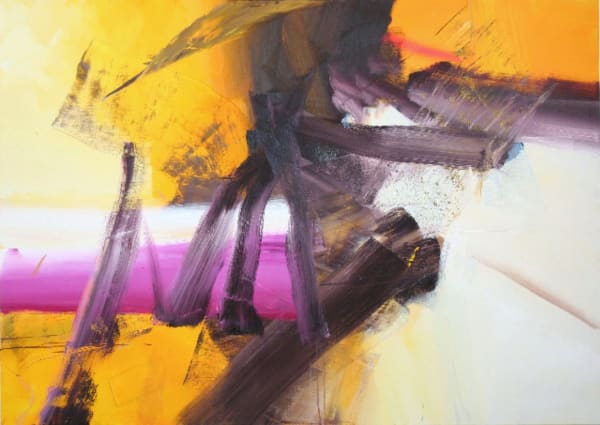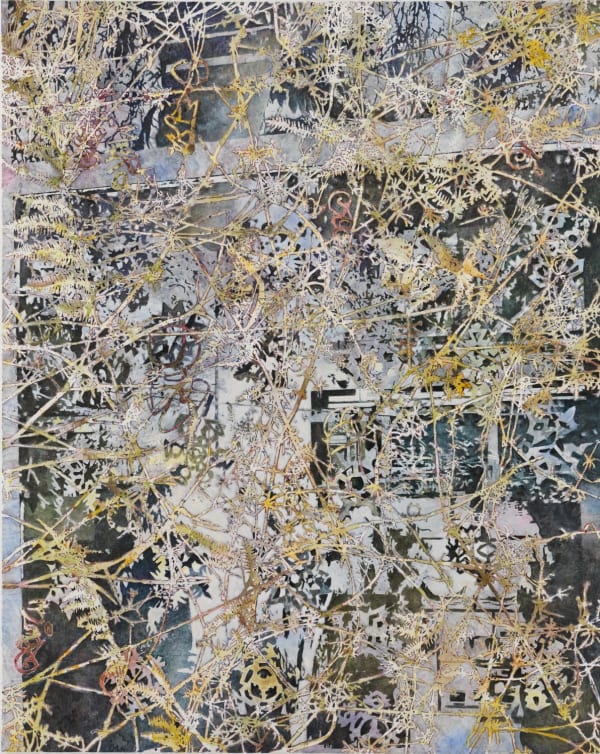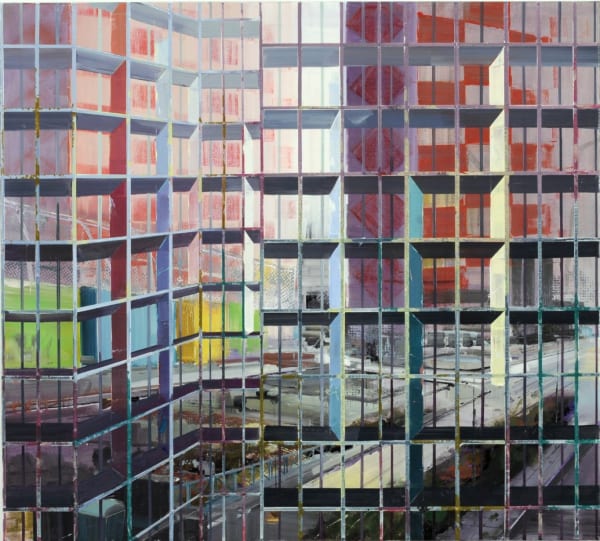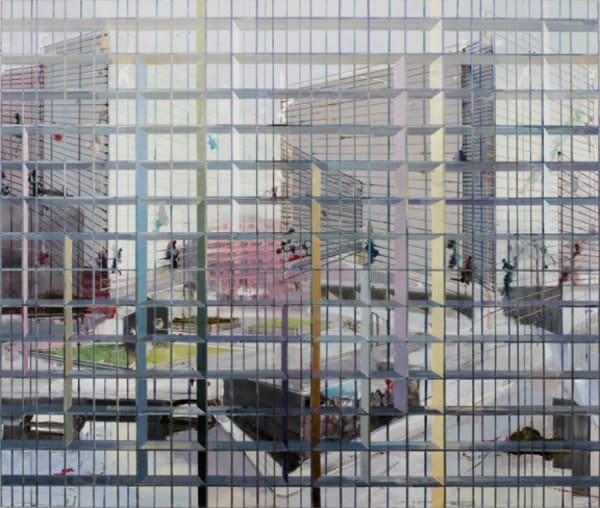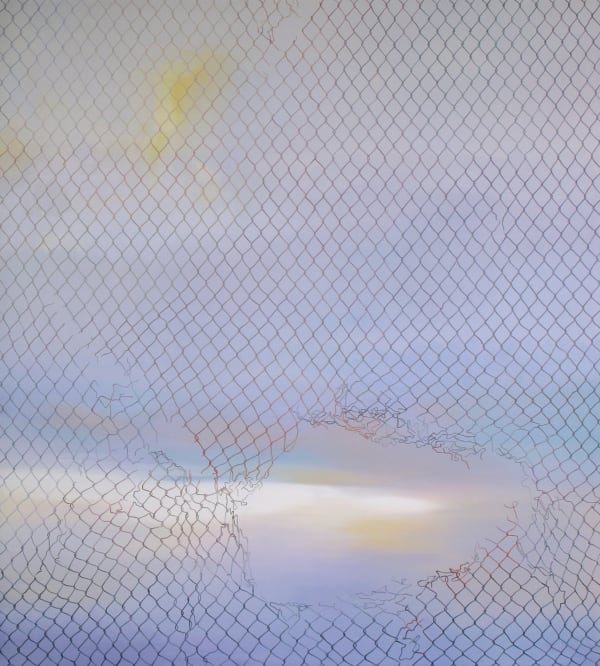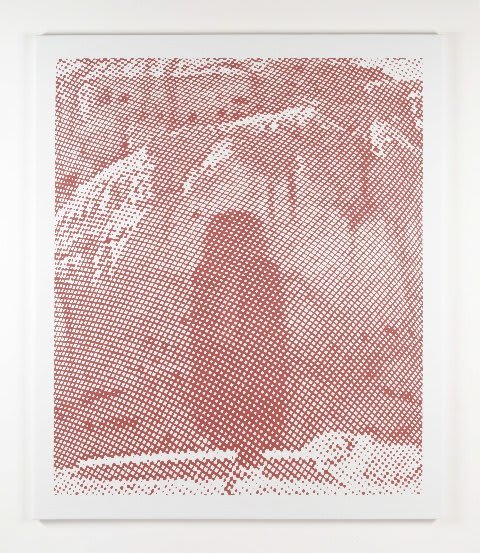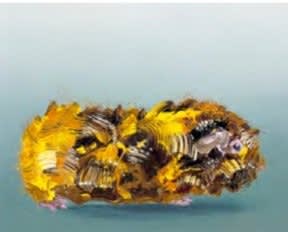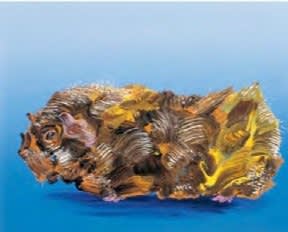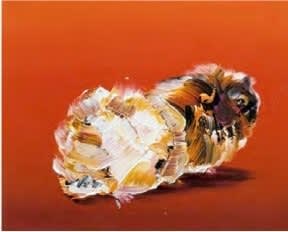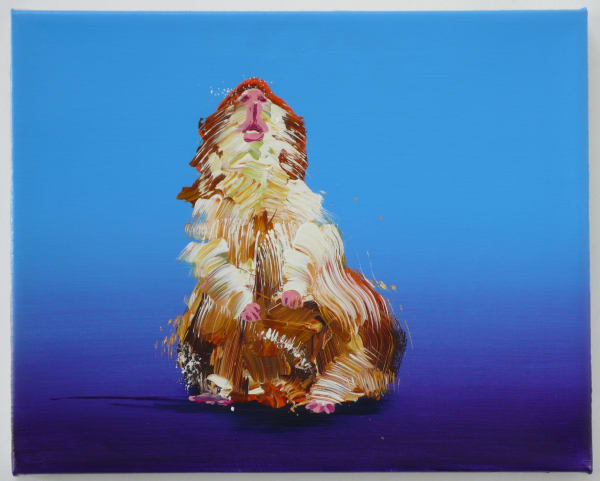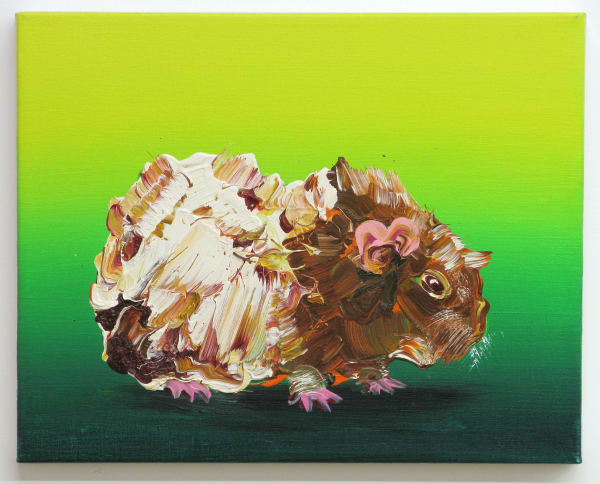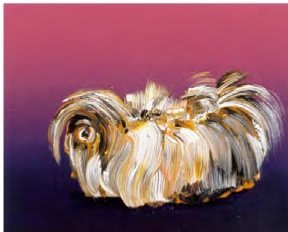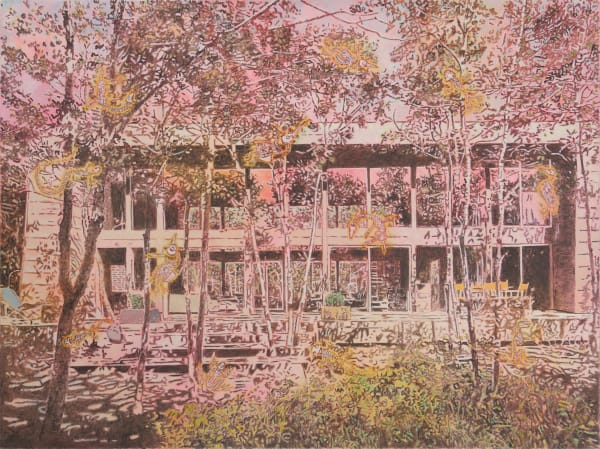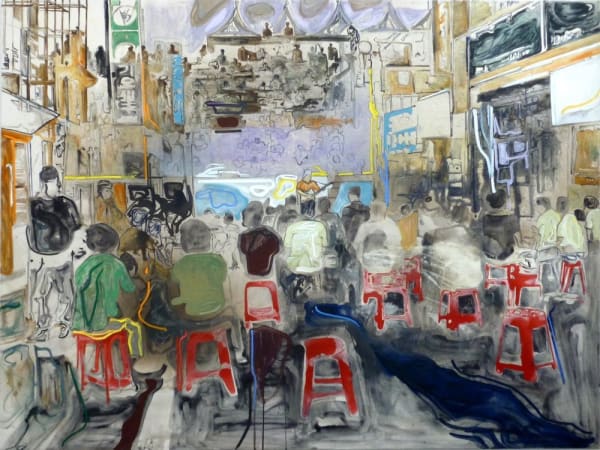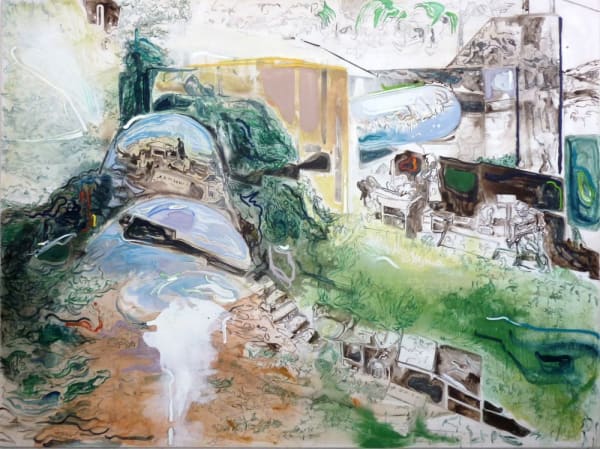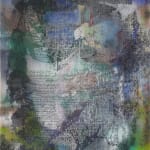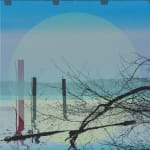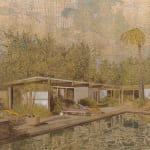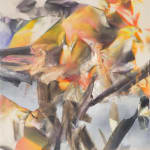EINFLUSS: 8 from Düsseldorf: Haeckel, Jensen, Kürten, Lokai, Ouadahi, Völker, Ettlinger, Fineisen
Introducing the Next Wave from Germany Part 2: San Francisco Panel discussion moderated by Laura Janku: Saturday 18 December, 2:30 pm
Düsseldorf is the center of European art making because of its Kunstakademie — the most influential training ground for artists in the world. This autumn, Hosfelt Gallery will introduce a group of eight artists associated with Düsseldorf and its art academy in exhibitions, first in New York and then in San Francisco.
Some of the artists associated with the Kunstakademie Düsseldorf (est. 1762) — either as students, or as teachers — include Gerhard Richter, Joseph Beuys, Bernd and Hilla Becher, Nam June Paik, Blinky Palermo, Yoshitomo Nara, Rosemarie Trockel, Andreas Gursky, Thomas Ruff, Thomas Struth, Thomas Demand, Tony Cragg, Katharina Fritsch, Thomas Schütte, Anselm Kiefer and Sigmar Polke. Every contemporary artist in the world has been influenced by this community of artists.
Düsseldorf is an exceptional breeding ground for art due to a unique confluence: the unsurpassed significance of the Kunstakademie, a dynamic ‘artist’s club’ (salon), visionary galleries, a long history of sophisticated and voracious private collecting, beautiful city-subsidized studio spaces, publicly-funded museums with a tradition of collecting contemporary art, and a host of kunsthalles throughout the country that exhibit and collect contemporary work that isn’t necessarily fashionable.
Developing within this fertile environment, the artists included in EINFLUSS are making mature work at an exceptionally high level. Their practice is characterized by a full awareness of the history of art-making and the dialogue about its relevance. Several of the artists included in this show have been widely exhibited in Europe, but never in the United States.
Cornelius Völker, who studied under A.R.Penck and Dieter Krieg, paints the same type of object over and over. The objects are the things ‘no one else would want to paint,’ for example, the drain in his sink. This practice, this meditation upon an object, is an exploration of its essence. Yet in representing the object, the artist has self-consciously inserted himself between the thing and the viewer. Questioning the meaning of an experience, he is interested in how that ‘reality’ shifts when the experience is mediated.
Jutta Haeckel’s brushstrokes do not define objects but instead describe the space between them. She makes representational paintings by representing void. Things that appear solid are nonexistent, challenging a viewer to consider the role of perception and raising questions of presence versus absence, the mundane versus the incomprehensible, fact versus faith.
Luka Fineisen makes sculpture, often at a heroic scale, from liquids, bubbles, even fragrance. While utilizing the familiar tools of sculptors — space, scale, texture and light — she subverts convention.
An Algerian of Berber descent who immigrated to study at the Kunstakademie, Driss Ouadahi, makes paintings about modern architecture’s failure to deliver on its promise to improve the human condition. His images of public housing projects, high-rise buildings, chain-link fencing and tiled passageways are signifiers of separation. They are symbols of the politics of class, ethnicity and ‘otherness’ as well as the lack of mobility in a supposedly global community.
Another student of Richter, Bernard Lokai, suggests landscape through grids of small abstract oil paintings. Like several of the artists in this exhibition, he explores the relationship between abstraction and representation, as well as the most fundamental question an artist can ask: what does it mean to paint an image?
Stefan Kürten’s prosaic subject matter — public gardens, shopping malls, and suburban architecture — are de-populated scenes of the 1970s. They are images that engender a feeling of familiarity through the unavoidable associations with one’s past. They are about memory and its loss. In some of the paintings, wallpaper patterns of interior spaces intertwine with foliage of the exterior world. This merging of inside/outside, nature/artifice parallels the unreliability and decay of memory – the disappearance of self, the confusion between real/present and memory/past.
Stefan Ettlinger’s paintings juxtapose seemingly unrelated images within a single picture plane. Looking at them is a bit like channel-surfing or the way disparate stories/images become correlated through proximity in a newspaper. The relationships are in fact not accidental and are akin to mixing music, Ettlinger’s other form of art-making.
The subjects of Birgit Jensen’s recent works are iconic places to which she’s never been — Mount Everest, the Great Wall, Giza. To make them, she appropriates an image, manipulates the pixels forming the image into patterns, then makes a shimmering, low-resolution painting. From a distance, the subjects are discernible, but up close, they come apart into textile-like structures. Like the artist, most of us know these places through images rather than first-hand, yet they are recognizable. Her work is about extreme mediation.The viewer is asked to de-code a painting of a photograph that has been digitally manipulated by an artist who’s never seen the place. It’s a bit like the children’s game ‘telephone’ – and raises the issue of the veracity of art making.
-
 Bernard LokaiOhne Titel, 2010oil on linen55 x 79 inches/139.7 x 200.7 cm
Bernard LokaiOhne Titel, 2010oil on linen55 x 79 inches/139.7 x 200.7 cm -
 Bernard Lokaio.T.oil on linen47.28 x 70.92 inches/180 x 120 cms
Bernard Lokaio.T.oil on linen47.28 x 70.92 inches/180 x 120 cms -
 Bernard LokaiLandschaftsblock S (Landscape Block S), 2010oil on canvas51 1/8 x 135 7/8 inches/130 x 345 cm
Bernard LokaiLandschaftsblock S (Landscape Block S), 2010oil on canvas51 1/8 x 135 7/8 inches/130 x 345 cm -

-

-
 Driss OuadahiVis à vis, 2010oil on linen35.46 x 39.4 inches
Driss OuadahiVis à vis, 2010oil on linen35.46 x 39.4 inches
90 x 100 cms -
 Driss Ouadahile tag, 2008oil on linen66.98 x 78.8 inches
Driss Ouadahile tag, 2008oil on linen66.98 x 78.8 inches
170 x 200 cms -
 Driss OuadahiFences hole, 2010oil on linen78.8 x 70.92 inches
Driss OuadahiFences hole, 2010oil on linen78.8 x 70.92 inches
200 x 180 cms -
 Birgit JensenDipamkara, 2010acrylic on linen78.8 x 66.98 inches
Birgit JensenDipamkara, 2010acrylic on linen78.8 x 66.98 inches
200 x 170 cms -

-
 Luka FineisenMelange I, 2010plexiglas, resin41.37 x 35.46 x 1.97 inches
Luka FineisenMelange I, 2010plexiglas, resin41.37 x 35.46 x 1.97 inches
105 x 90 x 5 cms -

-

-
 Cornelius VölkerMeerschweinchen #69, 2003oil on linen15.76 x 19.7 inches
Cornelius VölkerMeerschweinchen #69, 2003oil on linen15.76 x 19.7 inches
40 x 50 cms -

-
 Cornelius VölkerMeerschweinchen #115, 2003oil on linen15.76 x 19.7 inches
Cornelius VölkerMeerschweinchen #115, 2003oil on linen15.76 x 19.7 inches
40 x 50 cms -
 Cornelius VölkerMeerschweinchen #74, 2003oil on linen15.76 x 19.7 inches
Cornelius VölkerMeerschweinchen #74, 2003oil on linen15.76 x 19.7 inches
40 x 50 cms -
 Cornelius VölkerMeerschweinchen #71, 2003oil on linen15 3/4 x 19 3/4 inches/40 x 50 cm
Cornelius VölkerMeerschweinchen #71, 2003oil on linen15 3/4 x 19 3/4 inches/40 x 50 cm -
 Cornelius VölkerMeerschweinchen #93, 2003oil on linen15.76 x 19.7 inches
Cornelius VölkerMeerschweinchen #93, 2003oil on linen15.76 x 19.7 inches
40 x 50 cms -

-

-

-

-

-
 Stefan EttlingerFünfundzwanzig. Sechsundzwanzig. (Twenty-Five. Twenty-Six. ), 2009egg tempera and oil on canvas66.98 x 43.34 inches
Stefan EttlingerFünfundzwanzig. Sechsundzwanzig. (Twenty-Five. Twenty-Six. ), 2009egg tempera and oil on canvas66.98 x 43.34 inches
170 x 110 cms


